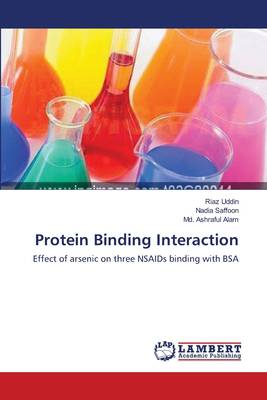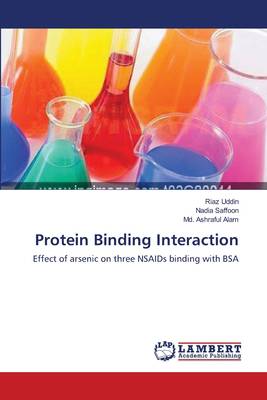
- Afhalen na 1 uur in een winkel met voorraad
- Gratis thuislevering in België vanaf € 30
- Ruim aanbod met 7 miljoen producten
- Afhalen na 1 uur in een winkel met voorraad
- Gratis thuislevering in België vanaf € 30
- Ruim aanbod met 7 miljoen producten
Zoeken
Protein Binding Interaction
Effect of arsenic on three NSAIDs binding with BSA
Riaz Uddin, Nadia Saffoon, MD Ashraful Alam
Paperback | Engels
€ 48,45
+ 96 punten
Omschrijving
Arsenic was used more than 2400 years ago in Greek and Rome as a therapeutic agent and as a poison. In current therapeutics use of arsenic as a drug is limited. Recent studies indicate that people of different countries are at higher risk of arsenic toxicity as underground water in parts of the world is drained by deadly arsenic. This book deals with the effect of arsenic on binding of three common non-steroidal anti-inflammatory drugs; paracetamol, aspirin and diclofenac sodium to bovine serum albumin. A detailed literature review on arsenic contamination and health hazards related to arsenic toxicity has been documented for reader's convenience. Arsenic contamination in relation to Bangladesh was also reviewed in details as Bangladesh is thought to be at greatest risk of arsenic related negative health outcomes.
Specificaties
Betrokkenen
- Auteur(s):
- Uitgeverij:
Inhoud
- Aantal bladzijden:
- 108
- Taal:
- Engels
Eigenschappen
- Productcode (EAN):
- 9783659001802
- Verschijningsdatum:
- 23/04/2012
- Uitvoering:
- Paperback
- Formaat:
- Trade paperback (VS)
- Afmetingen:
- 152 mm x 229 mm
- Gewicht:
- 167 g

Alleen bij Standaard Boekhandel
+ 96 punten op je klantenkaart van Standaard Boekhandel
Beoordelingen
We publiceren alleen reviews die voldoen aan de voorwaarden voor reviews. Bekijk onze voorwaarden voor reviews.











